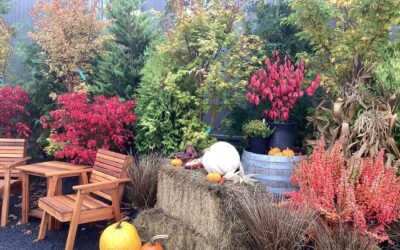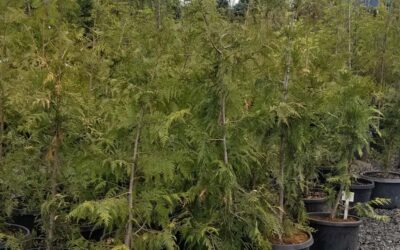If you’re looking into tree species identification to enhance your garden or landscaping in Oregon, you’re in good company. According to the Arbor Day Foundation, there are guides covering more than 200 trees and shrubs, each with unique leaf and bark features you can spot quickly (Arbor Day Foundation). Good news, learning these features is easier than it seems. Below are ten simple ways to help you identify your trees so you can choose and care for them with confidence.
1. Look For Leaf Shape
One of the easiest starting points is leaf shape. Broadleaf trees can have simple leaves (a single, continuous blade) or compound leaves made of multiple leaflets. Conifers, on the other hand, often sport thin needles or scale-like foliage. Noticing these shapes narrows down whether you’re dealing with a pine, a maple, or something in between. If you’d like a preview of the broadleaf and conifer families, you can visit types of trees to explore detailed categories.
2. Check Leaf Arrangement
Look at how leaves attach to the stem. Are they paired up opposite each other, or do they alternate as they climb the branch? This difference can point you toward certain families, such as maples, ashes, or dogwoods. Take a moment to compare a branch in your yard to the illustrated guides offered by the Arbor Day Foundation. You’ll find pictures of real twigs that help you confirm what you’re seeing.
3. Observe Leaf Surface
Next, notice the surface, texture, or “hairiness.” Some leaves, like those of mulberry trees, can feel fuzzy, while others are smooth or waxy (common among magnolias). These features are often overlooked, but they can be a big clue when leaves look alike otherwise.
4. Note Leaf Edges
Leaf margins or edges can be lobed, serrated, or smooth. An oak leaf’s deep lobes are very different from a birch leaf’s fine serrations. This distinction is part of why identifying a genus like Oak, or a specific species such as a White Oak, is simpler if you pay attention to edges. Once you know the genus, you can plug that into i-Tree Tools for a more precise calculation of the tree’s benefits (i-Tree Tools).
5. Watch Seasonal Changes
Leaf color or shape might shift with the seasons, especially for deciduous tree species. For example, aspens turn vibrant gold in the fall, while cherries offer pinkish-white blooms in spring. Even conifers can show subtle color shifts, so keep an eye out for changing needle shades or unexpected cones.
6. Examine Bark Texture
Bark is more consistent across seasonal changes than leaves, making it a reliable way to identify certain species year-round. Smooth bark can signal a beech, while thick, chunky ridges might point to mature pines or oaks. A 2020 research review found that focusing on bark can improve accuracy when classifying tree species with machine learning methods (Medium).
7. Look At Bark Color
Along with texture, note the bark’s color and any patterns. Some birch trees have a striking white trunk that peels in thin layers, while sycamores display patchy, mottled bark that reveals patches of green, yellow, and gray underneath. The color can be a giveaway, especially in older, more established trees.
8. Notice Bark Markings
Scars, ridges, or visible lenticels (small pores) can all set one species apart from another. Even subtle differences, like horizontal lines or diamond-shaped fissures, can help you distinguish between close relatives, such as a burr oak and a white oak.
9. Consider Flowers And Seeds
In late spring or summer, certain trees produce bold blooms, like magnolias or dogwoods. Flowers, fruits, and seeds are especially helpful to confirm your earlier guesses from leaves and bark. According to the Woodland Trust, flowers and seeds often appear at scheduled times throughout the year, giving you another seasonal sign to watch (Woodland Trust).
10. Use Helpful Tools
If you’re tackling larger properties or simply want high-tech options, there are advanced solutions like deep learning in ArcGIS Pro that identify plant species from photos (Esri). But for most home gardeners, pocket field guides and online resources are all you need. Step-by-step identification keys from the Arbor Day Foundation let you compare traits quickly. And if you’re searching for more insight, check out common tree species to see which options might fit your yard.
Quick Recap And Next Step
- Start with leaf shape and arrangement.
- Check texture, edges, and overall surface details.
- Observe seasonal changes to confirm your findings.
- Look to bark color and texture for year-round clues.
- Use flowers or seeds to confirm your guesses.
- Dip into specialized guides or tools if you’re still unsure.
Pick one tree in your yard or neighborhood and try these steps today. You’ll soon be able to spot key traits, narrow down its genus, and enjoy the satisfaction of naming your trees with confidence.




